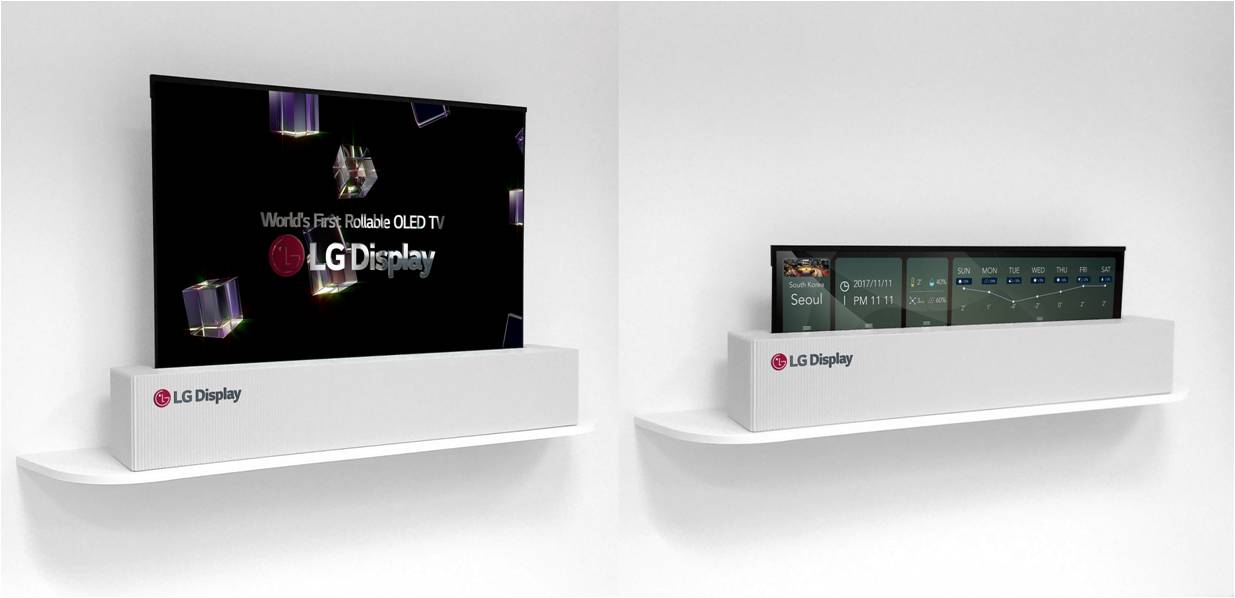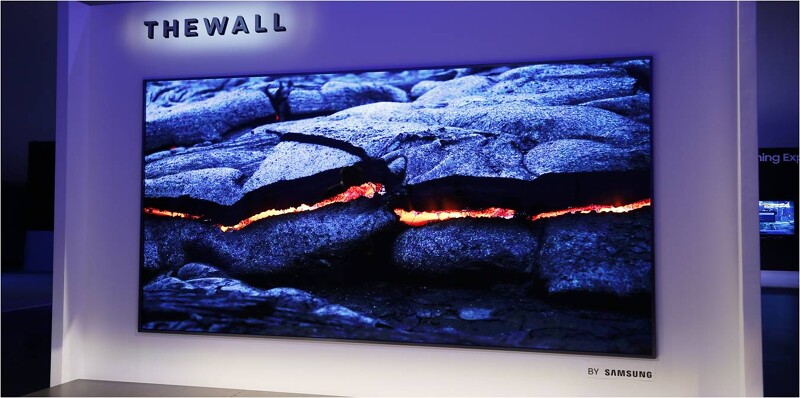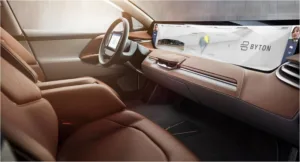Suppliers showcased their brightest and best next generation technology products at CES to give a glimpse of what will be coming next. They presented futuristic ideas, technology breakthrough, and new product concepts that can sometimes take two to five years to reach the market.

Some products may even take longer while others may stay only as technology concepts. For display technologies, the battle was intensified as new technologies, new formats, new sizes and new products competed for next generations’ consumer products at CES.
TV: LCD LED, OLED, QLED, Micro-LED, what is next?
LCD LED TV still has the majority share of the consumer market. But the battle is getting fierce at the high end, between OLED TV and quantum dot-enhanced LCD, QLED TV. OLED has received very high marks for high contrast, deeper black level, thinner form factor, wider viewing angle and picture quality. But it faces challenges in terms of higher cost, lower yield rates and low production volume. OLED shines in terms of flexibility and it really showed at CES.
 LG Display’s rollable OLED – Image:LG Display
LG Display’s rollable OLED – Image:LG Display
LG Display intrigued consumers with first a 65″ UHD rollable OLED TV prototype that can be rolled up and down. Also it can be portable. It also has the ability to roll up part of the way into a 21:9 aspect ratio display that can show notifications. It is not clear when it will come to market, but it definitely showed a different way to watch large screen TV.
Samsung dazzled CES, with the first modular 146″, self-emitting MicroLED technology TV called the “Wall”. Its enormous size makes it difficult to imagine it as a TV in the consumer market. But its modular format, module-based, bezel-less design, could enable consumers to customize their TV into different sizes and shapes. It can also create a wall–size display for multiple spaces.
MicroLED benefits from luminous efficiency, lower power consumptions, and better lifetime with the use of inorganic materials in the LEDs. It can combine the best features of LCD and OLED with higher brightness, a significant increase in power efficiency and the potential for lower cost. A MicroLED is itself a light source, so it does not need a backlight and it is the most energy efficient, long life system with high luminance for direct view or microdisplay use. It has the potential to be developed at a lower cost using semiconductor fabs to produce the LEDs and get higher yields with lower capex.
 Samsung’s Wall LED Display. Image:Samsung
Samsung’s Wall LED Display. Image:Samsung
While MicroLED offers many benefits, the technology is still difficult to mass produce and it has number of issues that need to be resolved to achieve market acceptance. MicroLED technology combines pixels with the light source but the most difficult issue is the mass transfer of tiny MicroLEDs into the backplane. Miniaturization of MicroLED potentially creates power leakage issues causing higher power consumption and lower efficiency in terms of lumens/watt. Some companies have already found solutions to these challenges, however. Samsung’s “Wall” product is expected to come to market in 2018. But higher costs and manufacturing challenges will keep it away from any mainstream TV market for some years. Most probably, it will show up first in the commercial signage market.
8K Arrives
Samsung also featured an 88″, 8K QLED TV empowered by AI technology that can upscale any kind of content to 8K resolutions. One of the major issues with 8K is availability of content. LG also unveiled an 88″ OLED display TV. At the high end, both Samsung and LG are pushing the envelope of OLED and QLED technology with super screen sizes, very high resolutions and higher picture performance. Even though these products can be commercially available for consumers, high prices will keep them away from most consumers. With AI capability, high processing power, and virtual assistants, TVs are working more as smart home hubs as well as entertainment devices requiring better performance. Each display technology is advancing but the presence of LCD LCD, OLED, QLED and MicroLED will make the next generation TV market an interesting battlefield.
Automotive: Next Generation Dashboards Stretching to the Limit?
Byton, showcased an electric concept car with the display stretching across the entire dashboard. This signals a new era of infotainment incorporating features and functionalities that have never been seen before including AI-based technology, connectivity, intuitive operation system, facial recognition, touch screen, voice interaction, gesture controls, and many other capabilities. Automotive display screen sizes are getting bigger and the number of displays inside the car increasing. Advances in display technologies are enabling next generation functionality for future autonomous cars.
Harman-Samsung showcased a QLED auto solution. The display is an automotive grade, cadmium-free QLED LCD. Harman-Samsung is also planning to bring flexible and transparent OLED displays to the auto industry. For some time, automotive displays have been lagging in terms of picture quality and performance compared to other major consumer products such as smartphones. But as the auto industry is gearing towards future autonomous cars and consumers are expecting same performance and functionality as they are used to in smartphones, the display requirements are changing.
Monitors: Too big to be a monitor display?
Nvidia announced a 65″ gaming monitor reference design, called the Big Format Gaming Displays (BFGD) and expected to be available from companies such as Acer, Asus and HP. These monitors use 65″ UltraHD HDR display panels with 1000 cd/m² peak brightness, 120hz refresh rates that WCG, empowered by quantum dot technology. Products are expected to arrive in the second half of 2018. These high-end monitors are geared towards gamers, video editors, graphic designers, and professional photographers. But the 65″ monitor can be like a TV on desk without a TV tuner.
Battle for next generation products
Suppliers at CES showcased TV, monitor and auto products with enormous screens and advanced higher performance displays in OLED, QLED or new microLED technology dazzling CES attendees. The battle of display technologies will get more intense for next generation consumer products. But success will only come to those who can resolve technology, manufacturing, production and cost challenges. Commercial success needs next generation products at lower costs and higher production volume to gain market shares. Sweta Dash
Sweta Dash is the founding president of Dash-Insights, a market research and consulting company specializing in the display industry. For more information, contact [email protected] or visit www.dash-insight.com

